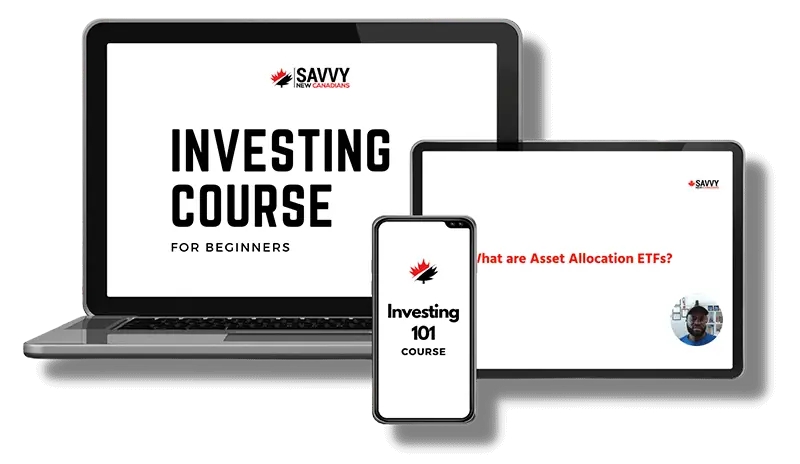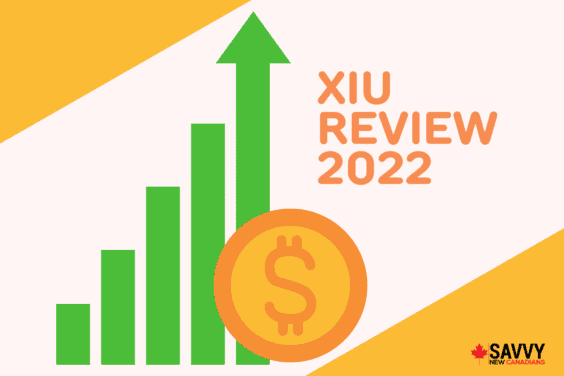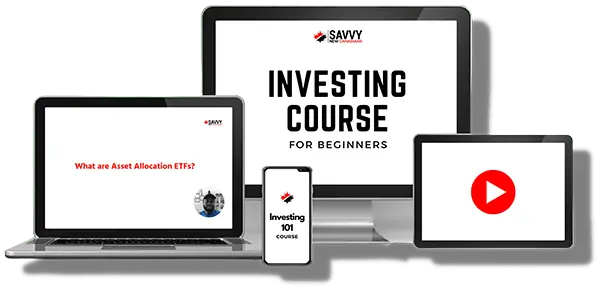A Registered Retirement Savings Plan (RRSP) is an investment account designed to help you save and invest for your retirement.
RRSP investments grow tax-free, sheltering your earnings from taxes until you start making withdrawals. The money you contribute is also deductible from your income and reduces the taxes you are liable for today.
RRSPs are a mainstay of retirement planning in Canada, and you can learn more about how the program can help you reach your retirement income goals.
Below are some of the best RRSP investment options to consider for your retirement accounts this year.
Best RRSP Investments in Canada for 2024
Popular RRSP investments in Canada include:
1. RRSP Savings Accounts
Cash held in a savings account is one option to grow your retirement savings. An RRSP savings account offers safety, and your principal earns interest income.
Savings accounts in Canada are protected by the Canada Deposit Insurance Corporation (CDIC) for up to $100,000.
The rate of return on RRSP savings is generally lower than what you could earn from alternative investments. To maximize your earnings, shop around for the best rates available.
Typically, you won’t find the highest rate offered by a big bank and may have to widen your search to online banks and credit unions.
An EQ Bank RRSP savings account generally offers one of the best regular interest rates (one of the highest rates in Canada).
While you may be able to find a few RRSP promotions with higher rates, they are often short-lived and only last for a couple of months.
Here’s a list of the best RRSP savings accounts and rates in Canada.
2. RRSP GIC Accounts
A Guaranteed Investment Certificate (GIC) is a fixed-income investment that pays you a guaranteed rate of return on your deposit after a specific period. They are low-risk and guarantee 100% of your principal, so you don’t have to worry about losing money.
GICs may offer a fixed or variable interest rate, and you can choose from various terms, e.g. 1-5 years.
GIC returns can be similar to or slightly higher than what you get on a savings account, and GIC deposits are also eligible for CDIC insurance.
You can hold GICs in your RRSP accounts and other term deposit products.
Here are some of the best GIC rates in Canada.
3. Using Exchange-Traded Funds (ETFs) in an RRSP
ETFs simplify investing in your RRSP by making it possible to invest in thousands of stocks and bonds using only a single (or a few) fund(s).
An ETF is traded on a stock exchange similar to a stock. They have in-built diversification as they can hold thousands of stocks, bonds, and/or commodities, and these assets may be representative of multiple sectors or geographical locations.
ETFs are generally cheaper than mutual funds. They are also very liquid and easy to buy and sell.
The risk rating of an ETF varies with the type of securities it holds and can vary from conservative to growth portfolios. Their returns track a benchmark index, and your ETF investment does well when the market goes up… and vice versa.
You can purchase ETFs in Canada using a brokerage platform or robo-advisor.
Brokerage Platforms
If you are a self-directed investor comfortable managing your portfolio, you can purchase ETFs using a discount broker. Examples in Canada include:
Questrade: They offer access to ETFs, stocks, bonds, mutual funds, options, and more at a low fee. ETF purchases are free. When you open an account ($1,000 minimum funding), you can get $50 in free trades.
Get more details in this complete Questrade review.
Wealthsimple Trade: You can purchase ETFs and stocks and enjoy $0 trading commissions using this platform. It also offers a $25 cash bonus when you open an account and fund it with at least $200 within 30 days.
Learn more about their offerings in this Wealthsimple Trade review.
Robo-Advisors
These online wealth managers create and manage your ETF portfolio on your behalf for a low fee. They do all the work, including rebalancing your portfolio whenever required. One of the best of them all is Questwealth.
Questwealth Portfolios clients enjoy automatic rebalancing, free financial advice, dividend re-investing, automatic contributions, personalized portfolios, and more at a low 0.20% to 0.25% annual fee.
Questwealth
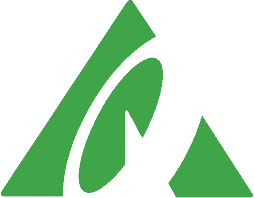
Professionally managed ETF portfolios
Multiple accounts & low fees
Auto rebalancing and div reinvesting
Invest $10K free in 1st year
In Canada, ETF investments may be protected against insolvency by the Canadian Investor Protection Fund (CIPF) for up to $1 million if the company holding your account is a CIPF member.
4. Investing RRSP in Stocks
Stocks give you a share of ownership in a company and the rights to share in its profits. When you own a stock, you make money when you re-sell it at a higher price (capital gains) and receive a profit share in the form of dividends.
Purchasing individual stocks is a risky investment, and while you stand to potentially earn high returns, you could also lose a lot of money.
Self-directed investors can use a trading platform to buy and sell stocks in Canada. Our top choices are:
- Moomoo (low trading fees, multiple products, and a significant signup bonus)
- Questrade (low trading fees and multiple products)
If you are new to stock trading, here’s what you need to know.
5. Holding Bonds in an RRSP
A bond is a fixed-income investment. When you purchase a bond, you effectively give out a loan to a company or government and earn a fixed interest on the loan until it matures. The loan (principal) is paid back to you in full at maturity.
Bonds are lower risk compared to stocks, and they typically offer a lower return over time. Types of bonds include Treasury bonds (bills), corporate bonds, and municipal bonds.
You can invest in bonds by purchasing them through a broker or as part of an ETF or mutual fund. Here’s what you need to know about bonds.
6. Mutual Funds
Mutual funds are the most popular type of investment held in Canadian RRSPs, and you can easily purchase a mutual fund at your bank or credit union.
These professionally managed portfolios can be expensive, easily topping 2% per year for an equity mutual fund.
Similar Exchange-Traded Funds cost much less, and you can purchase them using a robo-advisor at a combined cost of 0.70% or less per year.
For more on mutual funds, read this article.
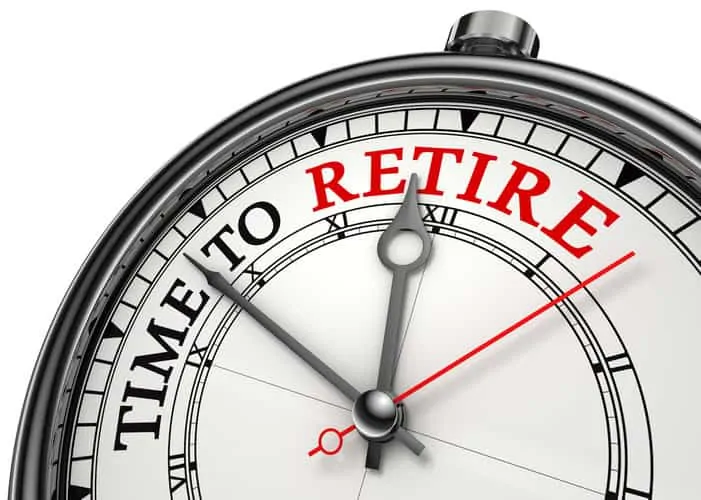
An RRSP account can hold various investment products depending on your needs and risk tolerance.
For example, the RRSP strategy utilized by a senior who is retiring in a year’s time and that of a person who has just turned 30 years old can differ considerably.
The 60-year-old senior may be looking at protecting their principal while generating a steady income. In contrast, the younger millennial with a 30+ year investment timeframe can opt for an aggressive portfolio mostly made up of equities.
Whatever your plan is, the RRSP accommodates a variety of investments based on guidelines from the Canada Revenue Agency (CRA).
RRSPs Explained
A Registered Retirement Savings Plan (RRSP) is a retirement account designed by the Federal Government for Canadians to save for retirement.
An RRSP offers several benefits, including tax shelter for your investment returns and tax savings on your contributions. This account forms part of the third pillar of income sources for Canadian retirees.
There are three main types of RRSP accounts:
Individual RRSP: This RRSP account is in your name. You make contributions to it based on your contribution room and can make withdrawals at any time. You can have more than one RRSP account at any one time.
Spousal RRSP: You can contribute to an RRSP account belonging to your spouse. You get tax deductions from contributing; however, your spouse owns the assets. Spousal RRSPs can be used as an income-splitting strategy to lower your family’s overall tax burden when withdrawals start in retirement.
Group RRSP: Your employer may offer a Group RRSP in which they match employee contributions and pay for the cost of managing the plan.
Other types of RRSP accounts include a locked-in retirement account.
This is the RRSP Contribution Limit
Each year, the government allows you to contribute up to 18% of your earned income up to a maximum amount. In 2023, the maximum annual RRSP contribution limit was $30,780. For 2024, the maximum annual RRSP limit is $31,560.
You can contribute your entire limit within the year or carry forward part of it to future years. Find out what your remaining contribution is by checking the Notice of Assessment sent by CRA.
If you have a company-sponsored pension plan, your annual contribution limit is reduced by your pension contribution.
The maximum annual RRSP contribution limit over the last 10 years:
| RRSP Tax Year | RRSP Contribution Limit |
|---|---|
| 2024 | $31,560 |
| 2023 | $30,780 |
| 2022 | $29,210 |
| 2021 | $27,830 |
| 2020 | $27,230 |
| 2019 | $26,500 |
| 2018 | $26,230 |
| 2017 | $26,010 |
| 2016 | $25,370 |
| 2015 | $24,930 |
| 2014 | $24,270 |
| 2013 | $23,820 |
| 2012 | $22,970 |
| 2011 | $22,450 |
RRSP Over-Contribution Explained
If you contribute more than your RRSP contribution room, it is considered an over-contribution. The CRA allows a buffer of up to $2,000 in excess contributions, after which you start paying a 1% monthly penalty on the excess amount.
You can rectify this situation by withdrawing the excess amount, and you may need to complete Form T1-OVP and pay the penalty that has accrued.
Learn more about RRSP over-contributions.
This is the RRSP Contribution Deadline
You have 60 days into the new year to make contributions on your tax return for the previous year. For example, in 2024, your RRSP contributions until February 29, 2024, are eligible to be deducted from your 2023 income tax return.
When your RRSP contributions are deducted from your taxable income, it results in tax savings. If you contributed $10,000 and your marginal tax rate is 40%, you save $4,000 and get this back as a tax refund.
Qualified vs. Non-Qualified RRSP Investments
RRSP investors have a wide array of investments to choose from. However, not all investments are acceptable in your RRSP account.
Also referred to as “qualified investments,” you can use the following securities in your portfolio:
- Exchange-Traded Funds (ETFs)
- Mutual funds
- Stocks
- Bonds
- Options and Warrants
- Savings and Term Deposits
- Treasuries
- Gold and Silver (subject to some conditions)
If you invest using “non-qualified” investments in your registered accounts, you could face penalties from the CRA.
Non-qualified investments in Canada include land, investments in small businesses, and bonds issued by a company whose shares are not publicly traded, e.g. those sold Over-the-Counter (OTC).
Benefits of an RRSP
An RRSP can help you grow your retirement savings quickly, with returns compounding tax-free over time. Other benefits include:
- Tax-deductible contributions mean you can save on taxes today and pay them in retirement when your tax bracket and rate are likely lower.
- You can borrow tax-free funds from your RRSP to pay for a home (Home Buyers’ Plan) or to pay for school (Lifelong Learning Plan).
- Couples can split their retirement income using a spousal RRSP account and lower their combined tax burden.
- RRSPs are generally protected from creditors in the event of bankruptcy or insolvency.
- RRSPs can be used as part of an estate plan, as they can be transferred to a spouse or common-law partner on a tax-deferred basis after death.
RRSPs vs TFSAs
A Tax-Free Savings Account (TFSA) can be used in similar ways to the RRSP to save for retirement.
In a perfect world, you’d max out both accounts. However, what happens if you can only afford to contribute to one of them?
Which one to choose?
- TFSAs are great for short-term and long-term savings. If you are saving money towards a vacation, home down payment, car, or wedding, you can easily use your TFSA and withdraw the funds when needed.
- TFSA contributions are not tax-deductible, and withdrawals are tax-free.
- The TFSA annual contribution limit for 2024 is $7,000 (was $6,500 in 2023). Whereas, for the RRSP, you can contribute up to $31,560 in 2024 ($30,780 in 2023) if you have enough earned income. An RRSP offers more room to grow your retirement savings faster.
- If you are in a high tax bracket, you save more in tax deductions when you contribute to an RRSP. If your tax bracket in retirement is going to be higher or similar to what it is now, you may want to first use up your TFSA account.
- An employer may offer to match your contributions to a Group RRSP. In that case, you should take advantage of the free money being offered and max out your RRSP contribution.
There are many angles to choosing between a TFSA and an RRSP. You can learn more about your options in this detailed TFSA vs RRSP comparison.
| Feature | RRSPs | TFSAs |
| Purpose | Retirement savings account | General savings account |
| Tax treatment | Contributions are tax-deductible, but withdrawals are taxable as income | Contributions are made with after-tax dollars, but withdrawals are tax-free |
| Contribution limit | 18% of previous year’s earned income or $31,560 (whichever is lower) | Annual limit of $7,000 |
| Withdrawals | Withdrawals are allowed but are subject to income tax | Withdrawals can be made at any time without tax consequences |
| Penalty for over-contributions | 1% per month on excess contributions | 1% per month on excess contributions |
| Eligibility | Anyone with earned income in Canada can contribute until age 71 | Anyone over 18 and a resident of Canada can contribute |
| Investment options | Wide range of investment options including stocks, bonds, and mutual funds | Wide range of investment options including stocks, bonds, and mutual funds |
| Contribution deadline | March 1 of the following year | Anytime during the year |
| Access to funds | Withdrawals are subject to withholding tax, but can be tax-free for certain purposes, such as buying a first home or going back to school | Withdrawals can be made at any time without tax consequences, but contribution room is not restored until the following calendar year |
| Spousal contributions | Contributions can be made to a spouse’s RRSP, which may result in a lower overall tax bill for the couple | Spousal contributions are not applicable, but a spouse can be named as a beneficiary |
| Government incentives | Contributions to an RRSP can result in a tax deduction, which can lower an individual’s overall tax bill | There are no government incentives for contributing to a TFSA |
| Impact on government benefits | Withdrawals from an RRSP may impact eligibility for certain government benefits, such as Old Age Security (OAS) | Withdrawals from a TFSA do not impact eligibility for government benefits |
| Estate planning | RRSPs can be rolled over to a spouse’s RRSP tax-free upon the holder’s death, but are subject to tax if left to a non-spousal beneficiary | TFSAs can be left to a designated beneficiary tax-free upon the holder’s death |
| Income splitting | RRSPs can be used for income splitting purposes if the holder is over age 65 | TFSAs cannot be used for income splitting purposes |
